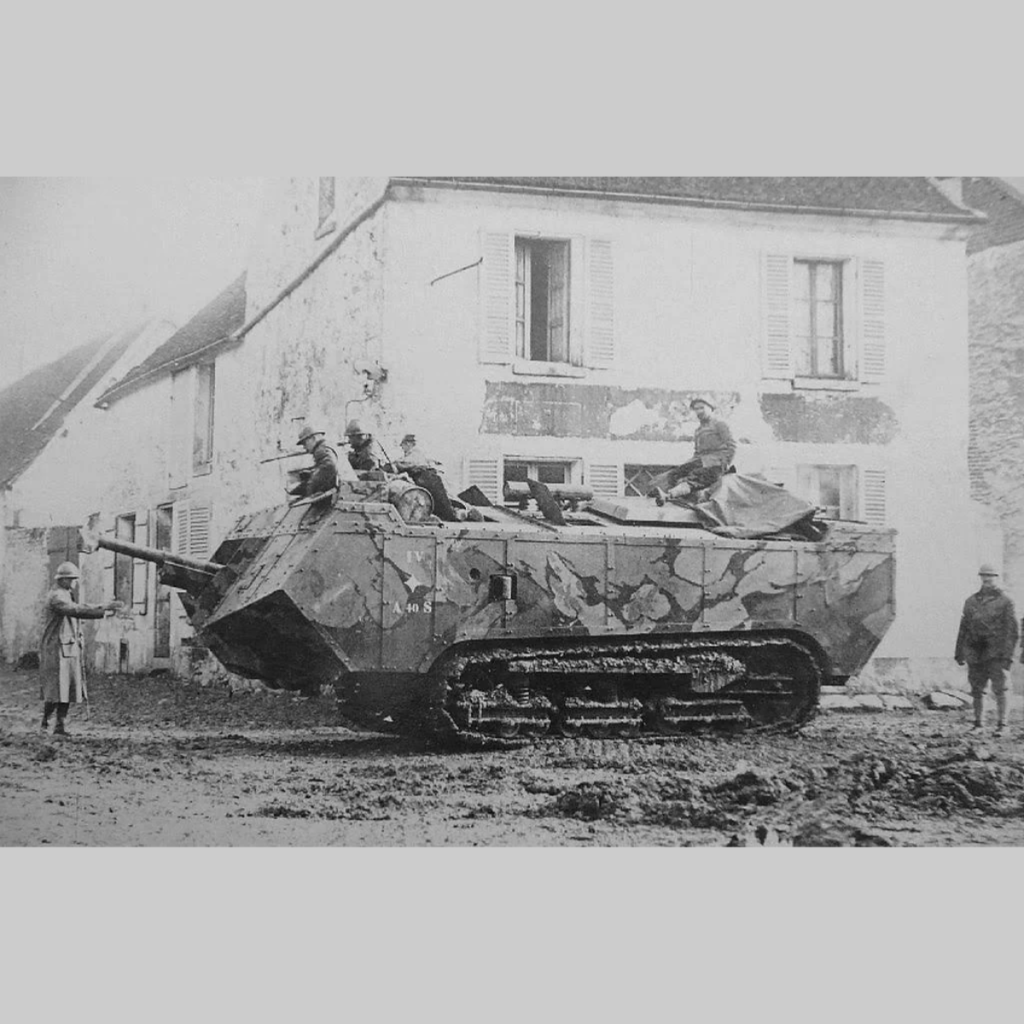
French tank designers had an ambitious idea before World War I: What if they could create a vehicle with the protection of an armored car but the firepower of an artillery gun?

Saint Chamond tanks sit in a line in World War I.(Public domain)
The design that eventually emerged packed a massive 75mm artillery gun into the nose of a tank named the Saint Chamond, but the offensive focus of the designers left glaring oversights in mobility and armor, allowing even pistol rounds through in some circumstances.
While French officers had considered designing an armored weapon platform before the war, the outbreak of hostilities put the effort on old. As Britain started building their first tanks, France got in on the action with two heavy tank designs of their own, the Schneider and the Saint Chamond.
The Saint Chamond was basically built around the French 75mm cannon, and this was significant firepower in World War I. Most Brtitish tanks had 57mm cannons, and the rest of of the world simply didn’t have tanks.

A Saint Chamond tank sits in a museum in western France.(Fat Yankey, CC BY-SA 2.5)
But the design compromises needed to make space for the massive cannon were significant. The vehicle drove on relatively thin and short treads, and the weight of the vehicle pushed it hard against the soil, making it questionable whether the tank would be able to navigate the muddy craters of No Man’s Land.
Worse, the cannon needed to be mounted at the front, and it couldn’t fit properly between the treads while leaving room for the cannon’s crew. So, instead, the entire length of the cannon had to sit forward of the treads, causing the tank’s center of balance to be far forwards of the center of the vehicle. As the French would later learn, this made it nearly impossible to cross trenches in the St. Chamond. Instead, crews would tip into the trench and get their gun stuck in the dirt.
Thanks to the limited traction from the treads, the tank couldn’t even back away from the trench and get back into the fight. Once tipped forward, they usually needed towed out.
But, worst of all, in an attempt to keep the already-heavy vehicle from getting too much heavier, they opted for light armor on the sides of the tank. While the front was only a little thicker, it was, at least, sloped. Col. Jean Baptiste Eugene Estienne, a French artillery officer who is now known as the Father of French Tanks, saw the Saint Chamond and tested its armor by firing his pistol at it.

The only surviving Saint Chamond heavy tank takes part in Tank Fest 2017, 100 years after the tank first entered service.(Alan Wilson, CC BY-SA 2.0)
The pistol round passed through the quarter-inch armor.
In the designers’ defense, the St. Chamond’s armor was soon upgraded to 11mm at a minimum, a little under a half-inch. The front armor was up to 19mm, almost .75 inches.
But still, when the British and French tanks made their combat debuts, the shortcomings of early tank design were quickly made apparent. Crews from both countries complained of bullets punching through the sides or, nearly as bad, impacting the armor so hard that bits of metal exploded off from the hull and tore through the crew.
French tanks had even worse trouble crossing muddy sections than their British counterparts, getting bogged down quickly. And that was if the engines held up. Often, they would breakdown instead.

As the war continued, though, France did find a successful design: the Renault FT, a light tank with a rotating turret, 37mm gun, and decent speed. It did have even lighter armor than the St, Chamond, but its configuration allowed the road wheels to help protect the crew from the sides, and the speed let them overwhelm German defenses before too many rounds could hit them.
Best, the Renault FT could be produced in much higher numbers, meaning that German defenders couldn’t often concentrate fire on any single target.
The design was so successful that it was one of the designs America licensed for its tank corps as it joined the war and stood up its armored forces. America ordered over 4,000 of the tank, known in American inventories as M1917s, but none of them reached the actual forces in France until after the armistice.
Still, the design was liked by U.S. Army Capts. Dwight D. Eisenhower and George S. Patton, officers who would create America’s armored strength and later rise to even greater fame in World War II.
Today, the closest modern equivalent to the St. Chamond isn’t even a tank. After all, the vehicle was created to carry a large cannon into battle, and, by the end of the war, it was used more as mobile artillery than to directly attack enemy trenches. As such, it’s more like the M109 Paladin than the M1 Abrams.
And, as artillery, the St. Chamond wasn’t bad. Its weak armor wasn’t a big deal when far from the front lines, and it wasn’t important that an armored artillery platform couldn’t quickly cross a trench.